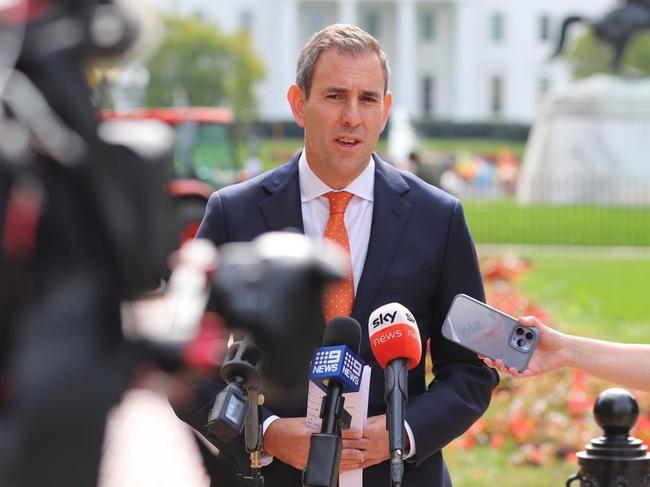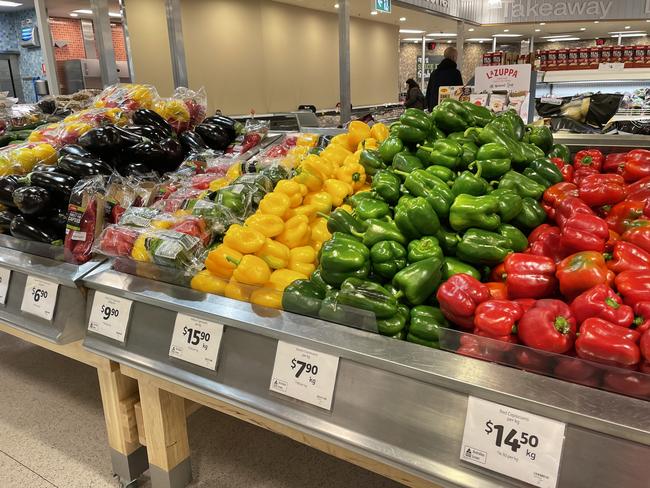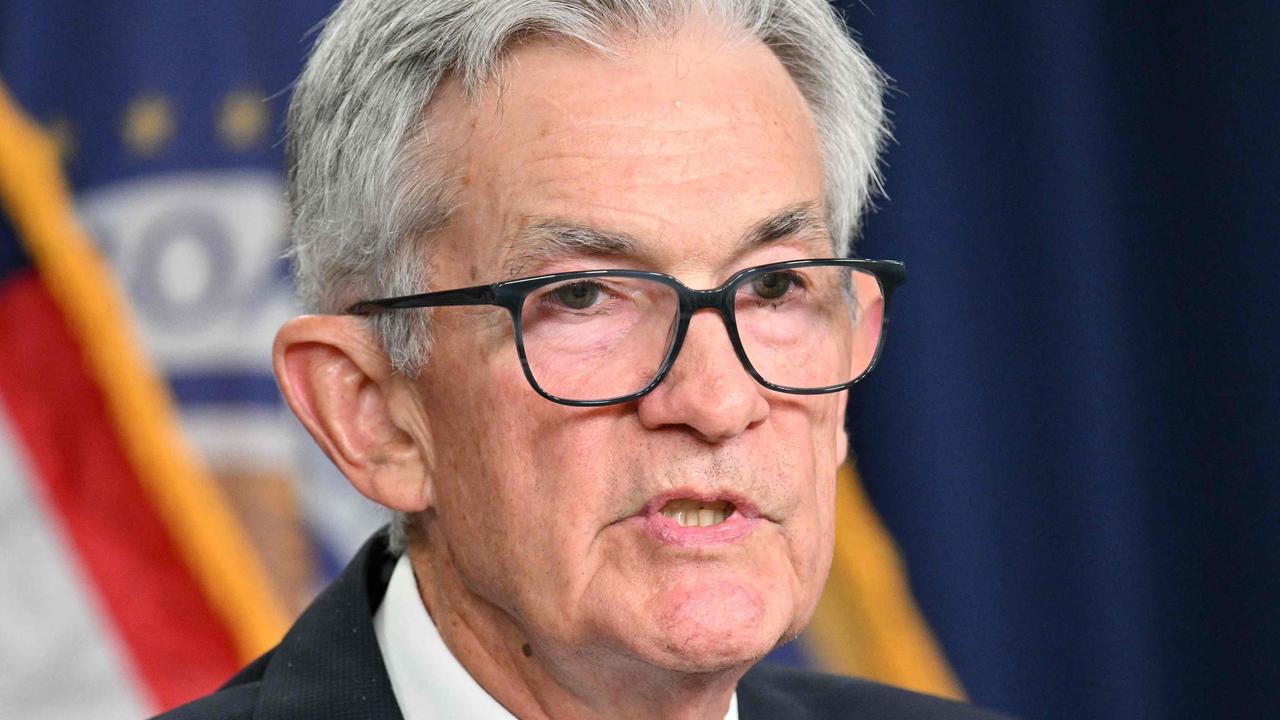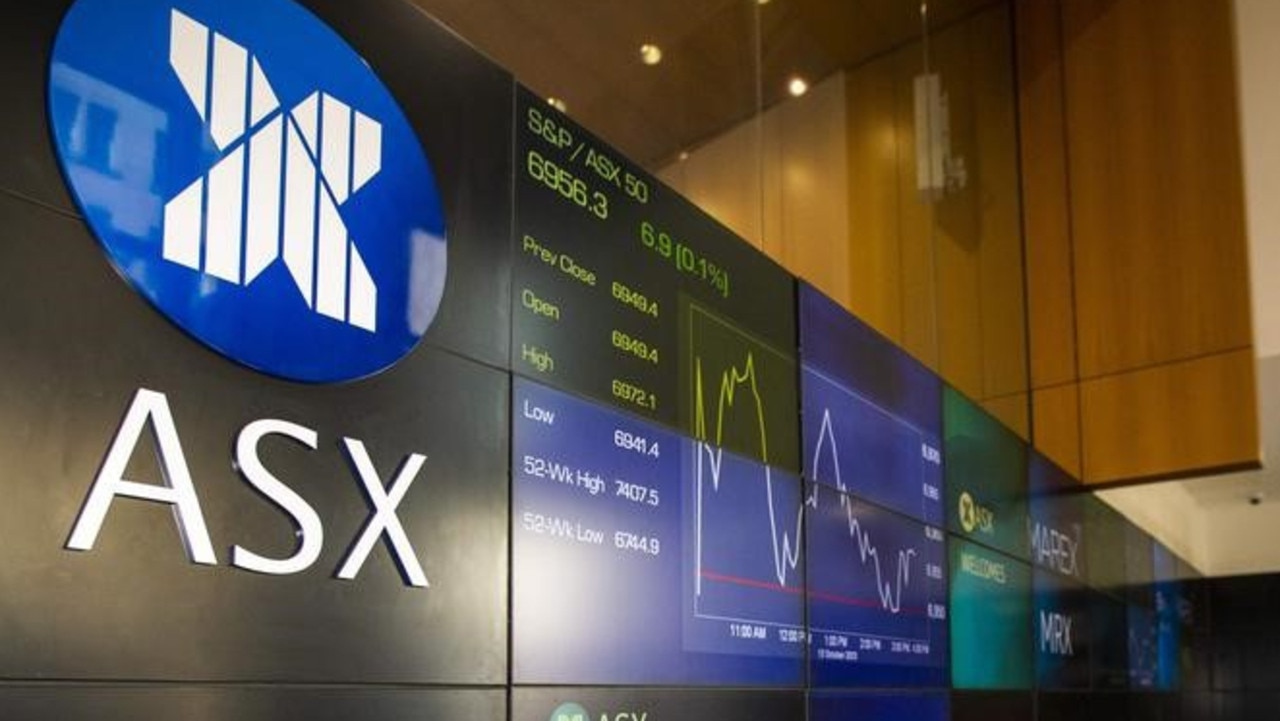What we know so far about the October 2022 federal budget
Anthony Albanese will hand down his first budget next week, with one group of Aussies set to cash in.

Fed Budget
Don't miss out on the headlines from Fed Budget. Followed categories will be added to My News.
Prime Minister Anthony Albanese is set to hand down his first budget on Tuesday, October 25, in the face of soaring inflation and a dark outlook for the global economy.
Treasurer Jim Chalmers has warned Australians to brace for spending cuts and limited cost-of-living relief, even as grocery prices are tipped to skyrocket following devastating floods.
But Labor has refused to cancel the former government’s stage three tax cuts – meaning some 600,000 high-income earners will be better off by up to $9075 per year when the changes come into effect in 2024-25.
“There will be a substantial impact on the cost of living [from the floods], there will be a substantial impact on the budget and there’s no pretending otherwise,” Dr Chalmers told the Nine’s Today on Tuesday.
“We don’t yet know what the full impact will be on the cost of living, we don’t yet know how many billions of dollars this flood and its recovery will cost. What we don’t want to do, and we’ve seen this overseas, is provide cost-of-living relief in a way that just creates more inflation and pushes interest rates up higher than they would otherwise be.”
Dr Chalmers pointed to the UK, where Prime Minister Liz Truss and Chancellor of the Exchequer Kwasi Kwarteng’s tax-cutting mini-budget last month caused chaos in money markets and brought the country’s pensions schemes to the brink of implosion.
Stream more finance news live & on demand with Flash. 25+ news channels in 1 place. New to Flash? Try 1 month free. Offer ends 31 October, 2022 >

“The UK government itself is recognising that perhaps they got this balance wrong and they’re trying to recalibrate their settings,” he said.
“That is an important lesson for all of us. What we’ve tried to do is make sure that the cost-of-living relief that we give doesn’t make the job of the Reserve Bank harder.”
Labor went to the May federal election promising around $1.3 billion in spending cuts to Coalition programs.
Dr Chalmers last week compared waste in the budget he inherited to “barnacles on a ship” that he must remove, The Sydney Morning Herald reported.
“The rorts and waste in the budget have been like barnacles on a ship and we need to scrape them off,” he told the newspaper.
“The best place to start are some of these discretionary funds which have been rorted by Coalition ministers over a long period of time and there is a multibillion-dollar opportunity to start unwinding this culture of largesse in grant programs, which has dominated the budget for too long.”

Budget overview
• Labor warning of a tough budget amid soaring inflation, global recession fears
• “It won’t be fancy. It won’t be flashy. It will be responsible. It will be solid,” Treasurer Jim Chalmers says
• Budget will address a “blunt and brutal” economic landscape focusing on inflation, the world economy and spending pressures
• Final budget outcome for 2021-22 came out better-than-expected with an underlying cash deficit of $32 billion, or 1.4 per cent of GDP, versus nearly $80 billion forecast in March
• Result was due to higher-than-expected receipts of around $27.7 billion, largely off the back of elevated commodity prices, and lower-than-expected payments of $20.1 billion
• Tuesday’s budget to show deficit has shrunk by $42 billion to under $36.9 billion, compared with the $78 billion forecast in March, but government warning the boost will be short-lived
• National debt sitting at $1 trillion, or 45 per cent of GDP, “which is getting more and more expensive to service”, Dr Chalmers says with interest payments set to rise by 14 per cent per year
• Annual inflation rose to 6.1 per cent in the June quarter, with the RBA forecasting CPI to peak at 7.75 per cent in 2022
• RBA has raised the official cash rate for six consecutive months to 2.6 per cent
• Wages growth rose to 2.6 per cent in the year to June, the highest annual rate since September 2014, but still well below inflation
• Unemployment rose to 3.5 per cent in August
• GDP is forecast to grow by 3.25 per cent over 2022
• Over the next four years, hospital spending will increase by 6.1 per cent per year, aged care by 5.5 per cent, defence spending by 4.4 per cent and NDIS by 12.1 per cent
• Budget isn’t expected to focus on major reforms, but instead lay the foundations for a more substantial May 2023 budget
Taxes
• No plans to ditch the former government’s stage three tax cuts, which will scrap the 37 per cent marginal tax bracket and lower the 32.5 per cent marginal tax rate to 30 per cent
• Australia Institute analysis shows high-income earners making more than $200,000 will receive a tax break of $9075 per year under stage three tax cuts, which are estimated to cost the budget $243 bilion in lost revenue over a decade
• Around 600,000 people earning over $200,000 will get the full $9075, while six million people earning under the $45,000 threshold will see no benefit from stage three, the think tank says
• Final end of the “lamington” low and middle-income tax offset (LMITO) to reduce the take-home pay of 10.2 million people earning between $48,000 and $126,000 by $1500
Cost of living
• Budget to include “responsible” cost-of-living relief but Government does not want stimulus measures to be “counter-productive” by adding to runaway inflation
• Recovery from devastating floods in Victoria, NSW and Tasmania expected to cost “billions” amid warnings of grocery price rises
• “What we’ve tried to do is make sure that the cost-of-living relief that we give doesn’t make the job of the Reserve Bank harder,” Dr Chalmers says
• No continuation of the former government’s 50 per cent cut of the fuel excise to 22.1 cents per litre, with the discount’s expiration on September 28 to bring in an extra $30 billion over six months
Family
• Paid parental leave allowance will be expanded by six weeks up to 26 weeks (six months), amounting to an extra $6499
• Maximum childcare subsidy rate lifted to 90 per cent for first child in care and increased subsidies for families earning less than $300,000 for one child in care, with the policy to start from July 2023 and cost $5.4 billion
• $10.8 million to fund a 12-month inquiry into the rising cost of childcare in Australia
Women
• $15.8 million to fund six projects to increase women’s workforce participation and representation in leadership positions, to directly benefit 5000 women nationwide

Health
• Cheaper medicines from January 1, 2023 with the maximum general co-payment for PBS scripts dropping from $42.50 to $30, saving someone taking two or three medications as much as $300 to $450 a year, at a total cost of nearly $200 million annually
• Bulk-billed video telehealth psychiatry consultations for rural and regional areas to be restored through a $47.7 million investment
• $1.4 billion to extend Covid-19 response measures by a further three months until December 31, including $35 million for PCR testing, $115 for rapid antigen tests and $235 million for PPE
• $33.6 million in medical research grants for 41 projects to help reduce the number of Australians affected by heart disease and stroke
• $5.4 million towards three brain cancer research projects
• Nearly $700,000 to fund new research investigating the impact of endometriosis on women’s fertility
• Establishing the Western Australia Comprehensive Cancer Centre
Disability
• National Disability Insurance Scheme blows out by $8.8 billion, now forecast to cost more than $50 billion by 2025-26
Education
• $485.5 million over two years for an extra 20,000 university places for students from low socio-economic backgrounds or rural and remote areas, people with disabilities and Indigenous students
• An additional 180,000 free TAFE places, made up of 60,000 additional places and dropping fees of 120,000 existing spots, under a $1.1 billion training package funded 50-50 with states and territories
Internet
• Homes and businesses to get improved NBN speeds with $2.4 billion allocated over four years to provide full-fibre access to approximately 1.5 million premises
Indigenous
• Subsidised childcare for Indigenous children increasing from 24 hours a fortnight to 36 hours, benefiting around 6600 families, to encourage more into early education
• Two-year extension to the National Partnership on Northern Territory Remote Aboriginal Investment, providing an additional $173.2 million for health, education, community safety and interpreter services in remote communities
Environment
• $600,000 to support local cafes and businesses near Australia’s busiest beaches in eliminating single-use plastics
• An additional $204 million to protect, manage and restore the Great Barrier Reef for a record spend of $1.2 billion
Foreign aid
• Increased foreign aid spending for the Pacific to counter growing Chinese influence, with $900 million in development assistance over four years, up from $525 million promised at the election
Infrastructure
• A total of $9.6 billion in infrastructure commitments
• $2.2 billion for Victoria’s Suburban Rail Loop, plus $330 million for roads including $150 million for the Camerons Lane Interchange at Beveridge, $125 million to upgrade Barwon Heads Road, and $57 million for the Ison Road Overpass
• $1 billion for NSW including $300 million for the Western Sydney Roads Package and $500 million towards early-stage development of high-speed rail connecting Sydney, the Central Coast and Newcastle
• Queensland to get $1.47 billion including $800 million for major upgrades of the Bruce Highway
• $670 million for Western Australia, with $125 million towards electric bus charging infrastructure for 130 new locally manufactured buses supplied by the state government
• Nearly $2.5 billion for the Northern Territory, including $350 million to seal the Tanami Road and upgrade Central Arnhem Road
• South Australia getting $660 million, with $60 million to construct on and off ramps for the Southern Expressway at Majors Road and $200 million to remove the Marion Road Level Crossing and upgrade Marion Road between Cross Road and Anzac Highway
• $685 million for Tasmania, including $540 million to upgrade the Bass Highway, the Tasman Highway and the East and West Tamar Highways
Industry
• Future Made in Australia policy to encourage local manufacturing, including refining of raw minerals to add value before export
• Establishment of National Reconstruction Fund to finance projects that create secure well-paid jobs, drive regional development, and invest in national sovereign capability
• More than $100 million towards growing the critical minerals sector, including lithium mining, to support clean energy and battery technologies
Energy
• $1.5 billion in concessional financing to fast-track Victorian Renewable Energy Zones and offshore wind development
• Joint funding of the Marinus Link under-sea electricity cables to Tasmania
Immigration
• Increased number of permanent migration visas available in 2022-23 by 35,000, from 160,000 to 195,000 places, to “address parts of the Australian economy currently experiencing severe shortages”
• $36.1 million in additional funding for visa processing to support a “surge capacity” of 500 staff over the next nine months
• Post-study work rights for international students extended from two to four years for bachelor’s degrees, three to five years for master’s degrees and four to six years for PhDs
Ukraine
• Extension of punitive tariff on goods imported from Russia and Belarus for a further 12 months until October 2023 in response to the invasion of Ukraine
– with NCA NewsWire
Originally published as What we know so far about the October 2022 federal budget





